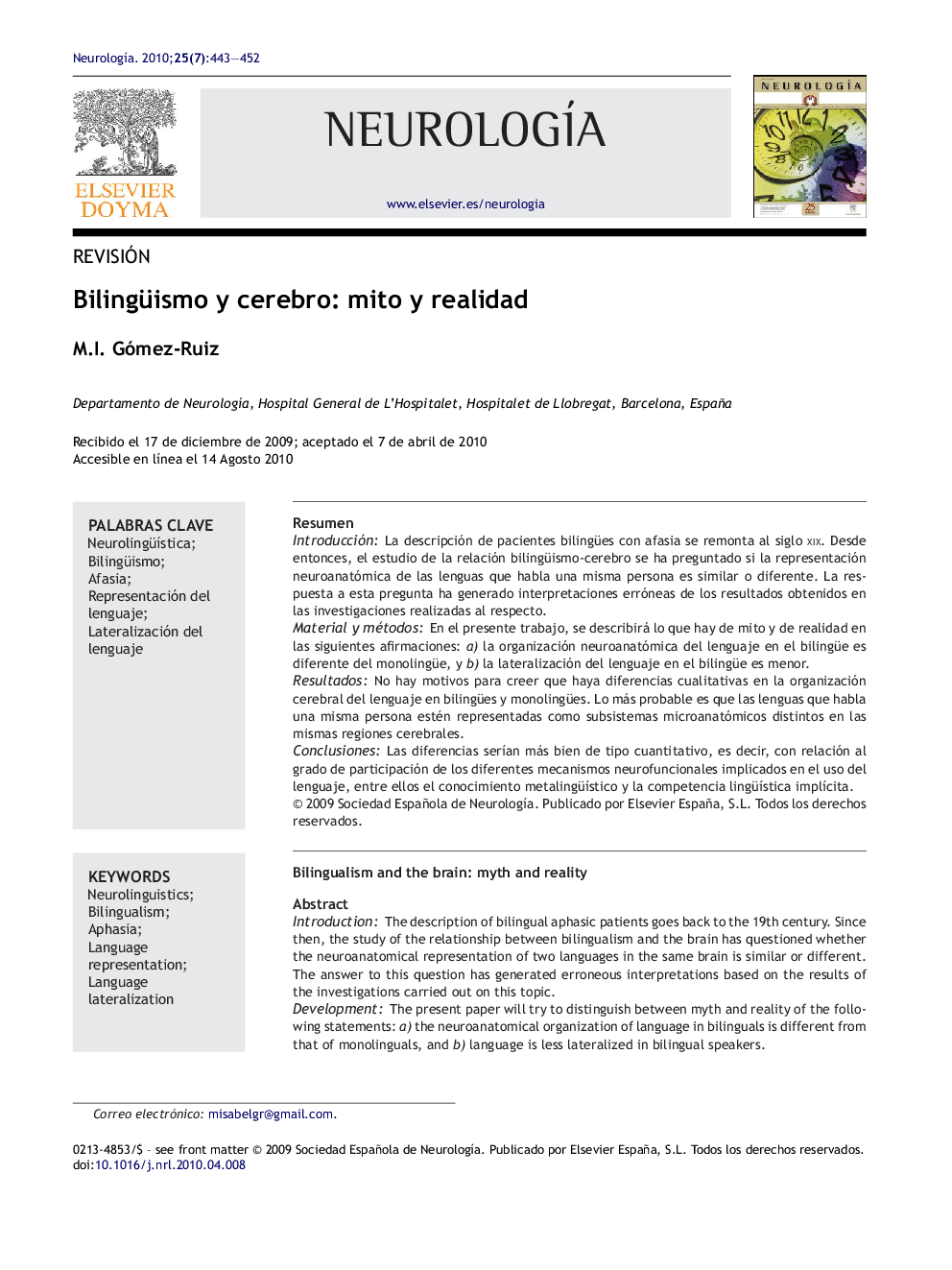| Article ID | Journal | Published Year | Pages | File Type |
|---|---|---|---|---|
| 3076182 | Neurología | 2010 | 10 Pages |
ResumenIntroducciónLa descripción de pacientes bilingües con afasia se remonta al siglo xix. Desde entonces, el estudio de la relación bilingüismo-cerebro se ha preguntado si la representación neuroanatómica de las lenguas que habla una misma persona es similar o diferente. La respuesta a esta pregunta ha generado interpretaciones erróneas de los resultados obtenidos en las investigaciones realizadas al respecto.Material y métodosEn el presente trabajo, se describirá lo que hay de mito y de realidad en las siguientes afirmaciones: a) la organización neuroanatómica del lenguaje en el bilingüe es diferente del monolingüe, y b) la lateralización del lenguaje en el bilingüe es menor.ResultadosNo hay motivos para creer que haya diferencias cualitativas en la organización cerebral del lenguaje en bilingües y monolingües. Lo más probable es que las lenguas que habla una misma persona estén representadas como subsistemas microanatómicos distintos en las mismas regiones cerebrales.ConclusionesLas diferencias serían más bien de tipo cuantitativo, es decir, con relación al grado de participación de los diferentes mecanismos neurofuncionales implicados en el uso del lenguaje, entre ellos el conocimiento metalingüístico y la competencia lingüística implícita.
IntroductionThe description of bilingual aphasic patients goes back to the 19th century. Since then, the study of the relationship between bilingualism and the brain has questioned whether the neuroanatomical representation of two languages in the same brain is similar or different. The answer to this question has generated erroneous interpretations based on the results of the investigations carried out on this topic.DevelopmentThe present paper will try to distinguish between myth and reality of the following statements: a) the neuroanatomical organization of language in bilinguals is different from that of monolinguals, and b) language is less lateralized in bilingual speakers.ResultsThere is no reason to believe in the existence of qualitative differences in the cerebral organization of language between bilinguals and monolinguals. It is mostly likely that two languages are represented as different microanatomical subsystems in the same cerebral regions.ConclusionsThe differences are quantitative rather than qualitative, that is, the degree of participation of the different neurofunctional mechanisms involved in the use of language, such as metalinguistic knowledge and implicit linguistic competence.
